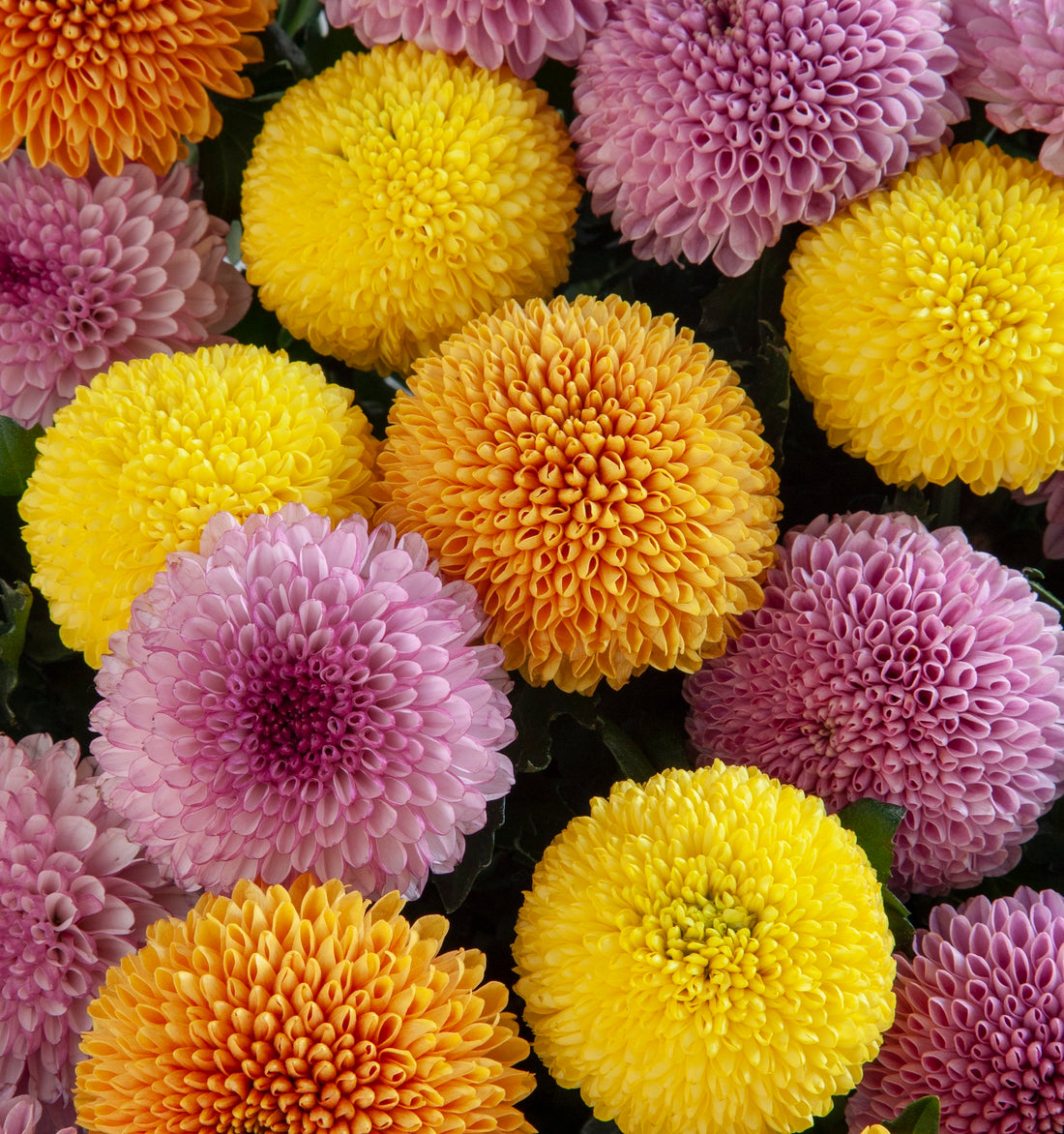Hello, this is Sakaguchi from Ren.
Tomorrow, September 9th, is the Choyo no Sekku (Chrysanthemum Festival).
Among the beautiful Japanese autumn flowers, the chrysanthemum flower is particularly eye-catching. In Japanese culture, the chrysanthemum has been a symbol of beauty since ancient times, and has frequently appeared in the crests of the imperial family and samurai families, as well as in poetry and literary works. In this article, we will introduce the history and cultural background of how the chrysanthemum flower is connected to a special Japanese event called Choyo no Sekku. We will also explore the origin and importance of Choyo no Sekku, which has tended to be overshadowed in recent years compared to other seasonal festivals.
In addition, Noren offers an original series of fabric accessories called "Kikuka" that uses the chrysanthemum flower as a motif. The chrysanthemum flower is a symbol of Japanese tradition and beauty. We will introduce the "Kikuka" series, which is packed with the charm of the chrysanthemum flower.
Chrysanthemum flowers and Japanese culture
The chrysanthemum flower has a special place in Japanese culture. This beautiful flower has been a symbol of beauty since ancient times and has been loved by the Japanese people. The chrysanthemum is an important symbol for the Imperial family, and is symbolized by the Imperial crest, the "Chrysanthemum Crest." It also frequently appears in the crests of samurai families and in Japanese poetry and literary works, and its beauty and elegance have fascinated the Japanese people.
One of the reasons why the chrysanthemum flower is considered special in Japanese culture is its elegant language. It symbolizes virtues such as dignity, nobility, and sincerity, and resonates with traditional Japanese aesthetic sense. In addition, the chrysanthemum flower has been deeply connected to the Japanese sense of the seasons as a beautiful flower that announces the arrival of autumn.
The chrysanthemum flower is often featured in Japanese literature and poetry, and its beauty is praised. For example, the Tale of the Heike contains the lines, "The chrysanthemum flowers bloom, then fall, clouds of flowers."
Chrysanthemum flowers bloom many times in the autumn of knowledge
Matsuo Basho
The chrysanthemum flowers are so blue I cover my eyes to see them
Kobayashi Issa
In this way, the chrysanthemum flower is an important symbol of beauty, elegance, and seasonal feeling in Japanese culture, and its existence is deeply connected to traditional Japanese aesthetic sense.
The five seasonal festivals and the Japanese sense of the seasons
In Japanese culture, the change of seasons has a special meaning and is deeply integrated into daily life and events. Among these, the five seasonal festivals have been considered important as events marking the turning points of the seasons.
The five seasonal festivals include "Setsubun" in spring, "Joshi" which is the Peach Festival, "Tango" in summer, "Tanabata" which is the Star Festival, and "Choyo" in autumn. Each seasonal festival is connected to the sense of the seasons and events in Japan.
The autumn festival, Choyo no Sekku, is an event that celebrates the beauty of autumn and the colorful scenery of nature. Choyo no Sekku is also known as the Chrysanthemum Festival, as the chrysanthemum flower is one of the most representative symbols of autumn.
The chrysanthemum flower is a symbol of the beauty of autumn, and the ninth day of the ninth month of the lunar calendar, which is now mid-October, was the season when chrysanthemums were at their most beautiful.
People have prayed for eternal youth and longevity by decorating with chrysanthemum flowers and drinking "chrysanthemum sake," which is sake with chrysanthemum flowers floating in it.
The origin and significance of the Double Ninth Festival
The autumn festival, Choyo no Sekku, is an event that celebrates the beauty of autumn and the colorful scenery of nature. Choyo no Sekku is also known as the Chrysanthemum Festival, as the chrysanthemum flower is one of the most representative symbols of autumn.
In China, the birthplace of the five seasonal festivals, chrysanthemum flowers are a symbol of longevity and immortality, and the ninth day of the ninth month of the lunar calendar was considered the season when chrysanthemum flowers are at their most beautiful. It was believed that by climbing mountains and picking chrysanthemums on this day, one could pray for longevity and ward off bad luck. This Chinese tradition was also inherited in Japan, where it took root as the Double Ninth Festival.
The Double Ninth Festival is an opportunity to pray for longevity, enjoy time with family and friends, and show gratitude to older people.
Wishing to ward off evil spirits has also been considered important. In ancient Japan, September was also the season when epidemics were prevalent. Chrysanthemum flowers and journeys to the mountains were considered ways to ward off evil spirits and protect health. The Double Ninth Festival has taken root in Japanese culture as a day to celebrate physical health and spiritual happiness.
The Double Ninth Festival is a traditional Japanese event in which people pray for longevity and happiness and enjoy the beauty of autumn, and its origins and significance can be said to symbolize Japanese culture and aesthetic sense.
Changes in the Double Ninth Festival and Contemporary Issues
The Double Ninth Festival has long been a cherished traditional event in Japan, but in recent years it has often been felt to have overshadowed other seasonal festivals. Let's consider this change and the current issues.
In the past, the Choyo Festival was a time to enjoy the coming of autumn, decorate homes with chrysanthemum flowers, go on excursions to the mountains, and enjoy spending time with family and friends. However, in modern society, people are so busy with their daily lives that they have less time and awareness to devote to traditional events.
Another issue is that interest in traditional events is declining as Japanese values and culture change. Younger generations often do not know the significance or origins of the Double Ninth Festival, and traditional values may be fading.
Noren's original cloth accessory "Chrysanthemum"
"Kikuka" is based on the motif of the chrysanthemum flower, a symbol of autumn, and is one approach to protecting Japanese traditions and culture and passing them on to the future.
The clear autumn weather in October when chrysanthemums are in full bloom is called "Kikubare."
Chrysanthemum flowers are also used as auspicious motifs on women's kimonos.
The chrysanthemum pattern embodies a woman's desire to remain eternally beautiful.


